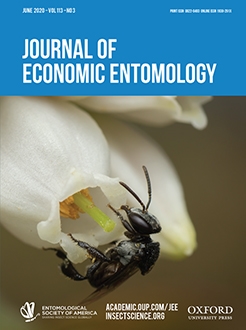The Anastrepha fraterculus (Wiedemann) complex is currently comprised of at least eight morphotypes, including several that are likely to be described as new species. It is critical to evaluate whether the morphotypes differ in tolerance to phytosanitary treatments. Temperatures from 0 to 3°C are used as a phytosanitary treatment for some commodities exported from the region and at risk of infestation by the A. fraterculus complex. Description of A. fraterculus morphotypes as new species could result in the annulation of phytosanitary treatment schedules for the new species. This study compared the relative cold tolerance of five populations from three morphotypes of the A. fraterculus complex: Andean, Peruvian, and Brazilian-1. Both a laboratory and wild strain of the Brazilian-1 morphotype were studied. Differences in mortality of third instars of the five A. fraterculus populations reared on nectarines were observed only with short treatment durations at temperatures ranging from 1.38 ± 0.04°C to 1.51 ± 0.08°C (mean ± SEM). Estimated times to achieve the LT99.99682 (probit 9) showed that Brazilian-1 wild, Brazilian-1 laboratory, and Cusco population were the most cold tolerant, followed by Andean and Peruvian, the least cold tolerant morphotype (i.e., Brazilian-1 wild = Brazilian-1 laboratory = Cusco population > Andean > Peruvian). These findings suggest that the current cold treatment schedules of 15 d at ≤ 1.11°C and 17 d at ≤ 1.67°C can be applied as cold treatments to any potential new species that may arise from the A. fraterculus complex.
How to translate text using browser tools
12 March 2020
Relative Tolerance of Three Morphotypes of the Anastrepha fraterculus Complex (Diptera: Tephritidae) to Cold Phytosanitary Treatment
Vanessa S. Dias,
Guy J. Hallman,
Amanda A. S. Cardoso,
Nick V. Hurtado,
Camilo Rivera,
Florence Maxwell,
Carlos E. Cáceres-Barrios,
Marc J. B. Vreysen,
Scott W. Myers

Journal of Economic Entomology
Vol. 113 • No. 3
June 2020
Vol. 113 • No. 3
June 2020
phytosanitation
postharvest treatment
quarantine treatment
South American fruit fly




